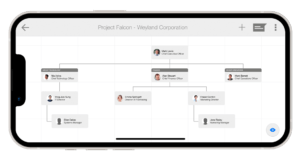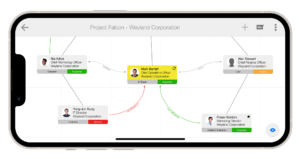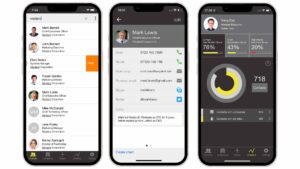What is a Territory Plan?
A territory plan is a strategic roadmap to achieve your sales quota. Traditionally, territory plans were based on geographical regions. However, modern territory plans now include target industry verticals and organisation sizes (e.g., enterprise, mid-market, SMB).
By focusing on these elements and leveraging relationship mapping, you can build the foundation of a territory plan in just 60 minutes. A successful plan includes three essential components:
- Defining your target market
- Creating a lead generation strategy
- Developing a strategy for advancing deals
Benefits of a Territory Plan
A well-constructed territory plan offers several advantages:
- Improved Focus: Identifying specific target markets allows you to allocate your time and resources effectively.
- Increased Efficiency: Clear strategies for lead generation and deal progression reduce wasted effort and improve productivity.
- Stronger Customer Connections: Tailored approaches to outreach and engagement foster trust and authenticity.
- Better Resource Allocation: A structured plan helps in prioritising high-value opportunities and leveraging sales collateral efficiently.
- Consistent Results: By following a plan, you can ensure a steady pipeline of leads and a higher likelihood of meeting your sales quota.
Step 1: Define Your Target Market
Defining your target market is the cornerstone of a strong territory plan. Begin by understanding your sales quota and narrowing your focus based on geographical, industry, or organisational constraints.
Analyse Past Success
Evaluate your past deals or consult with colleagues to identify patterns in customer behaviour. For example:
- Did multiple companies in the insurance sector purchase your product recently? If so, it’s likely a lucrative market.
- Pay attention to company size, as it often correlates with their budget and purchasing power. For instance, while thousands of law firms exist, only a few are high-budget clients like the Magic Circle firms.
Know Your Competition
Understanding your competition allows you to position your product more effectively. Consider these aspects:
- Positioning: Why do customers choose your product over others?
- Pricing: Is your pricing competitive for your target market?
- Features: Highlight unique offerings, such as advanced data security for industries like Financial Services.
Leverage Sales Collateral
Sales collateral supports every stage of the sales cycle. Evaluate available resources to prioritise outreach to similar organisations with common problems.
- Datasheets: Highlight product strengths tailored to specific industries.
- Case Studies: Use social proof to demonstrate success stories.
- Demo Videos: Simplify complex solutions, especially for technical evaluators.
Step 2: Devise a Lead Generation Strategy
A robust lead generation strategy ensures a consistent flow of opportunities in your sales pipeline. Start by estimating the number of leads needed to meet your quota.
Self-Generation
Proactively generating leads is essential, especially in the early stages of your plan. Follow these tips:
- Dedicate time to prospecting. In your first two months, spend 50% of your week on this activity. Aim for at least three new meetings per week.
- Prioritise low-hanging fruit, such as upselling or cross-selling to existing customers.
- Research thoroughly: Invest time in understanding your prospects’ industries, pain points, and challenges. Well-researched insights demonstrate expertise and make your outreach more relevant and impactful.
- Leverage hyper-personalisation: Tailor messages to each prospect’s specific challenges, interests, and goals to increase engagement. Hyper-personalisation demonstrates authenticity and helps break through the noise, especially in competitive markets.
Leverage Account Development Representatives (ADRs)
If your company provides ADRs or BDRs, collaborate effectively:
- Set clear meeting targets and work backward to calculate the required outreach volume.
- Share feedback to refine messaging and include social proof from your sales collateral.
- Use relationship mapping to help ADRs identify key contacts and develop personalised messaging.
- Schedule daily check-ins to address challenges and refine strategies.
Step 3: Devise a Strategy for Advancing Deals
Once you’ve generated leads, focus on converting them into closed business. Aim for at least one discovery meeting and one deal progression meeting per day.
Discovery Meetings
These initial meetings determine whether your solution aligns with the customer’s needs. Maximise success by:
- Using a Sales Qualification Framework to uncover key details such as:
- Budget availability
- Decision-making process
- Key stakeholders
Deal Progression Meetings
Follow-up meetings are crucial for advancing opportunities. Each meeting should have:
- A clear agenda to secure commitments and address objections.
- A focus on either technical validation or commercial validation.
Incorporate relationship mapping to track evolving connections within the organisation. This helps ensure that you’re engaging with the right people at each stage of the sales cycle.
Key questions to address:
- Does your solution meet the technical requirements?
- What criteria is the client using to evaluate options?
- Does the client have an allocated budget?
- Who are the decision-makers and approvers?
Final Thoughts
By systematically addressing your target market, lead generation, deal advancement, and leveraging relationship mapping and hyper-personalisation, you can craft an effective territory plan in just one hour. This focused approach ensures consistent progress towards your sales goals while maximising your resources and efforts.
Start building your plan today and take control of your sales territory!








